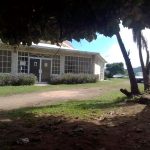
The John Canoe (Jonkonnu), which links music and dance, mime and symbol is an early traditional dance form of African descent that still survives in Jamaica.
The mask has a central place in African religions, and it may be that JohnCanoe, a masquerade form, and myal, a possession-healing form of religion, were closely allied in their early forms in Jamaica, as they are allied in the two powerful male secret societies of West Africa, Poro and Egungun. The John Canoe moved through three phases in Jamaica. The first was the early years of introduction and adaptation, and this was followed in the 1770’s by the addition of a European feature, the set girls. The third stage came after emancipation and it was this masquerade which shows the British influence most clearly.
The capacity for response was in itself complex, for the African slaves came from different tribes, spoke different languages and worshiped different gods. Also, if we examine the slave society at any given time we would find a basic division between the communities of the African-born and the Jamaican-born slaves. The unifying forces were blackness and the passion for freedom. It remains true, however, that most of the slaves imported into Jamaica came from the same culture area, and underlying the great regional or tribal differences…there is a very wide substratum of basic ideas that persists in the rituals, myths and folk tales of West African peoples.
This African-rooted, African-inspired body of folk cultures, was the African-Jamaicans’ response to uprooting and alienation during the century after emancipation, when society felt the full force of colonialism. There was no other link, no other indigenous form of self-expression, no other source from which to nourish the sense of African identity. Neither brutality nor hardship broke their spirit. They preserved through 3 centuries of exploitation an unquenchable vitality and an equally remarkable ability to “tek bad tings mek laugh.”







